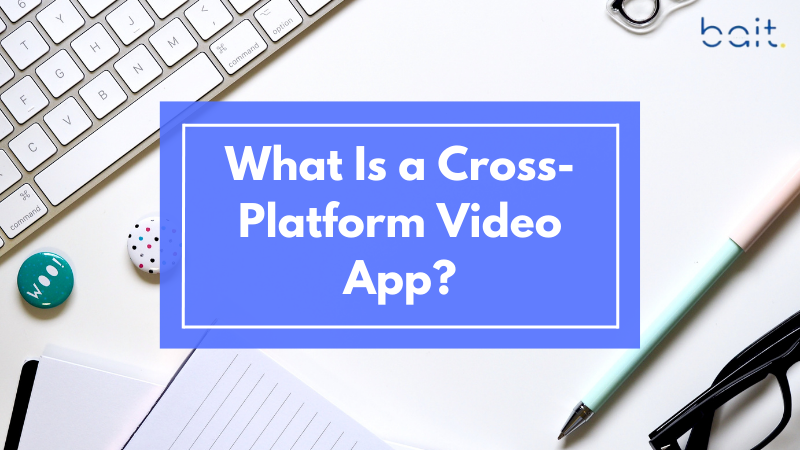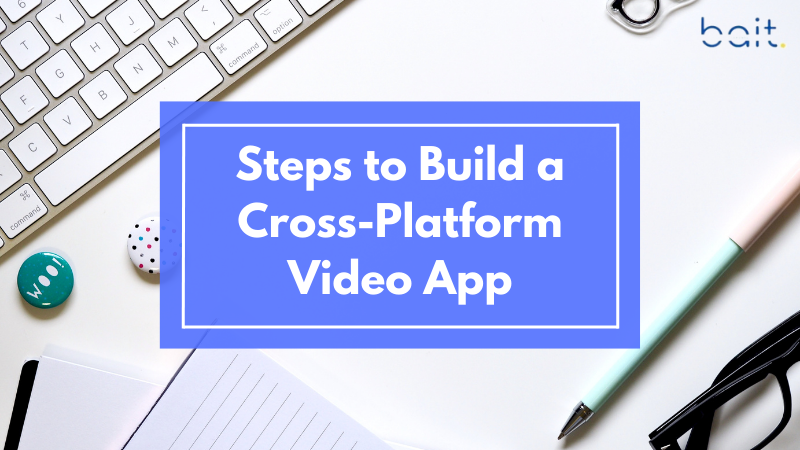The growing demand for video content has opened exciting opportunities for businesses and developers to create innovative video applications. Cross-platform video apps, in particular, are gaining momentum as they enable developers to build a single application that operates seamlessly across platforms like iOS and Android. This approach not only saves time and costs but also ensures a uniform user experience.
This guide delves into the concept of cross-platform video apps, their advantages, must-have features, development steps, and cost considerations.
What Is a Cross-Platform Video App?

A cross-platform video app is designed to function across multiple operating systems with a unified codebase. Frameworks such as React Native, Flutter, and Xamarin are widely used for building these apps, offering streamlined development while maintaining high performance and a smooth user interface.
Why Choose a Cross-Platform Video App?
Cross-platform video apps provide numerous benefits, making them a popular choice for businesses and developers:
1. Cost-Effective Development
By writing a single codebase for multiple platforms, development expenses are significantly reduced compared to creating separate native apps.
2. Faster Launch Times
Cross-platform frameworks expedite the development process, enabling quicker app deployment.
3. Consistent User Interface
The ability to deliver a unified design across platforms ensures a cohesive user experience.
4. Broad Audience Reach
Targeting both iOS and Android users allows businesses to maximize engagement and grow their audience base.
Core Features of a Cross-Platform Video App
To create a successful cross-platform video app, it is essential to include features that captivate users and add value.
1. Video Upload and Playback
- Uploading: Allow users to upload videos in various file formats.
- Playback: Ensure seamless video viewing with basic controls like play, pause, rewind, and forward.
2. Video Editing Tools
Incorporate features such as trimming, adding filters, effects, and text overlays to boost user creativity.
3. Content Discovery
- Search: Provide robust search options by keywords, hashtags, or categories.
- Recommendations: Utilize AI to offer personalized video suggestions based on user behavior.
4. Social Sharing and Engagement
- Enable liking, commenting, and sharing.
- Facilitate sharing content on social media platforms to enhance visibility.
5. Live Streaming
Allow real-time streaming with interactive elements like live chat and reactions.
6. Notifications
Use push notifications to update users about new videos, interactions, and app features.
7. Revenue Generation Features
Integrate monetization options such as ads, in-app purchases, or subscription models.
Best Frameworks for Cross-Platform Video App Development
Several frameworks offer excellent solutions for developing cross-platform video apps:
1. React Native
- Developed by Meta (formerly Facebook), React Native provides high performance with a native feel.
- It includes a rich library of components and strong community support.
2. Flutter
- Powered by Google, Flutter uses the Dart programming language to create visually appealing and fast apps.
- It excels in customization and development speed.
3. Xamarin
- A Microsoft framework that allows developers to use C# to create cross-platform applications.
- Ideal for enterprise-level projects.
4. Ionic
- A web-focused framework utilizing HTML, CSS, and JavaScript.
- Suitable for progressive web apps and mobile apps.
Steps to Build a Cross-Platform Video App

Building a cross-platform video app involves the following critical steps:
1. Research and Planning
Conduct thorough market research to identify your audience and competitors. Define your app’s features and determine a monetization strategy.
2. Design the User Interface
Craft wireframes and prototypes for the app layout and functionality. Focus on creating a responsive design adaptable to various devices.
3. Select a Framework
Choose a cross-platform development framework that aligns with your project goals.
4. Develop the Backend
Build a reliable backend for handling data storage, user authentication, and video management. Consider using cloud services like Firebase or AWS for scalability.
5. Integrate Video Functionalities
- Use video processing tools like FFmpeg or third-party APIs.
- Optimize videos for diverse devices and internet speeds.
6. Test Extensively
Conduct comprehensive testing to eliminate bugs and ensure performance, compatibility, and security across platforms.
7. Launch and Iterate
Deploy the app on app stores and consistently update it based on user feedback and trends.
Challenges in Developing a Cross-Platform Video App
Developing a cross-platform video app can come with its challenges:
1. Optimizing Performance
Managing high-quality video playback and editing across platforms requires meticulous optimization.
2. Scalability
The app must be designed to handle growing user traffic and data efficiently.
3. Ensuring Data Security
Implement robust encryption and secure APIs to protect sensitive user data during video uploads and streaming.
4. Platform-Specific Adjustments
Customizing features for each platform may increase development complexity.
Development Costs for a Cross-Platform Video App
The cost of developing a cross-platform video app varies depending on its complexity and features.
1. Basic App
- Features: Basic video playback and user profiles.
- Time: 3–4 months.
- Cost: $15,000–$30,000.
2. Intermediate App
- Features: Video editing, personalized recommendations, and monetization.
- Time: 5–7 months.
- Cost: $40,000–$70,000.
3. Advanced App
- Features: Live streaming, AR filters, and advanced analytics.
- Time: 8–12 months.
- Cost: $80,000–$150,000 or more.
Conclusion
Creating a cross-platform video app is an efficient way to meet the growing demand for video content while maximizing audience reach. Frameworks like React Native and Flutter enable developers to build high-performance apps with reduced costs and time-to-market.
With strategic planning, robust development, and effective monetization methods, your cross-platform video app can succeed in the competitive digital landscape.
